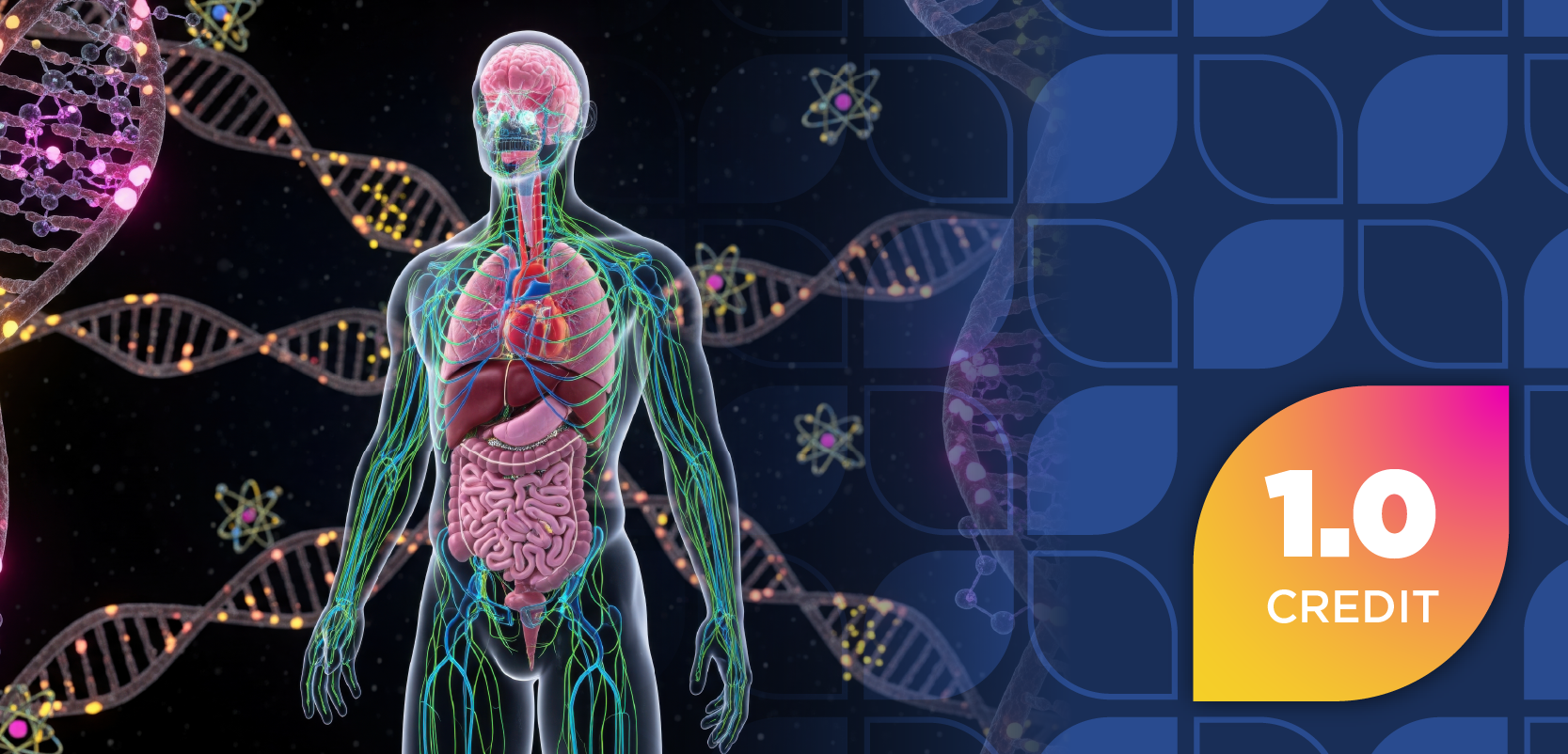
Pharmacists Lead the Shift Toward Comprehensive, Evidence-Based Obesity Care
Diana Isaacs, PharmD, discusses evolving perceptions of obesity, the expanding role of pharmacotherapy, and how pharmacists can drive access, counseling, and long-term metabolic health.
In this interview, Diana Isaacs, PharmD, BCPS, BCACP, BC-ADM, CDCES, outlines how the understanding of obesity has evolved from a lifestyle issue to a complex chronic disease influenced by genetics, environment, and metabolic factors. She discusses the growing role of pharmacists in early identification, patient counseling, optimization of pharmacotherapy, and navigating barriers such as stigma, cost, and access. Isaacs also highlights practical strategies for supporting patients on GLP-1 and dual incretin therapies and emphasizes how pharmacists can shape a more comprehensive, long-term approach to cardiometabolic health.
Q: As a pharmacist, how have you seen the perception of obesity evolve from being seen as a lifestyle issue to being recognized as a complex chronic disease driven by neuroendocrine and metabolic factors? How does that influence patient counseling?
Isaacs: As a pharmacist, over the last several years, I have seen a big shift. Previously, overweight and obesity were thought of as just a lifestyle issue—something where you just need to eat less and exercise more—and if you had overweight or obesity, it was kind of blaming the person for it. We’ve really shifted as we’ve learned that there are so many components that impact whether a person will have overweight or obesity. There’s a big genetic impact, many environmental factors, hormonal factors, whether someone has gained and lost weight previously, and even things out of a person’s control, like if their mother had gestational diabetes or their weight gain during pregnancy. There are so many factors that can impact overweight or obesity, and that has really changed how we treat it. It’s a lot more than, “Oh, try to eat less and exercise more,” right?
Q: What opportunities do pharmacists have to identify at-risk patients and initiate early interventions before obesity-related complications develop, especially in health systems still using BMI as the primary trigger for care?
Isaacs: BMI is challenging. We’ve used it for a long time because it’s very easy to use, and initially it can help us identify people. But unfortunately, BMI by itself can miss people who have a lot of visceral fat and actually have overweight or obesity, and in other circumstances, someone may have a BMI over 25 and simply be very muscular. So it’s a first step, but we shouldn’t rely only on that. Guidelines now advocate looking at things like waist and waist-to-height ratio, as well as further body fat analyses to gain better insight. It’s a really exciting time for everyone, but especially pharmacists, as we now have more medications targeted to treat obesity. Lifestyle will always be a foundation, but these medications work very well together with lifestyle. Pharmacists are ideal to educate and counsel patients on the use of these medications, titrate them, and adjust other medications as needed—blood pressure medications, lipid medications, and diabetes medications—so a person does not have side effects.
Q: Updated obesity care guidelines now emphasize pharmacotherapy and chronic management. What are the biggest barriers you’ve encountered to implementing these guidelines across care settings, and how have you worked to overcome them?
Isaacs: We have medications, which is great, but there are still several barriers to their use. One is stigma around taking medications. Many people feel this is a lifestyle disease and that they should just work harder and lose weight, and they shouldn’t need medications. I have patients taking these medications and doing really well but hiding it from people because they don’t want to be stigmatized. In terms of the medications themselves, there are challenges with cost and access. Costs have been high for GLP-1 agents and GIP/GLP-1 agonists, leading to disparities in use. Some people can afford them or have great insurance coverage, while others who would benefit—especially for cardiovascular or sleep apnea benefits—cannot afford them. I am optimistic because costs are lowering, coverage is expanding, and hopefully more people will access them. But there have also been shortages and increased compounding, which has led to issues like side effects, incorrect doses, uncertainty about what people are receiving, and inconsistent access. People have lost coverage or had compounding pharmacies shut down, leading to interruptions in therapy and weight regain. These are all barriers we’re trying to work through.
Q: When patients or prescribers are hesitant to start GLP-1 or dual incretin therapy, what key clinical or real-world data do you highlight to build confidence?
Isaacs: This is a question I get a lot. People say, “I’m nervous about taking these medications. Could there really be a miracle drug that helps me lose weight? There has to be some catch. Does it cause cancer? Is it problematic?” I describe to my patients that these drugs have actually been around since 2005, when we had our first incretins with exenatide. We have over 20 years of real-world experience, in addition to clinical trials and animal studies. What’s really reassuring is the cardiovascular outcome data. Previous weight-loss drugs had scary cardiovascular risks, and many worked like stimulants—like amphetamines. People assume that if a drug causes weight loss, it must be bad for you. But incretin therapies work very differently. They replace a hormone many people lack, and we have robust cardiovascular outcome data showing they are not only safe but beneficial, reducing heart attacks, strokes, and cardiovascular death. That reassures people. Carrying excess weight for years is not safe either, and people feel encouraged when they hear this.
Q: What practical strategies have you found most effective in improving access to GLP-1 RAs—managing formulary hurdles, mitigating GI side effects, and supporting titration and adherence?
Isaacs: There’s a lot we can do to help with cost and access. One is identifying comorbidities. If a person has cardiovascular disease, semaglutide has an indication for obesity with cardiovascular disease. If someone has type 2 diabetes, these medications are easier to obtain. We also now have indications for kidney disease, sleep apnea, and MASH, which can help with coverage. Pharmacists can identify conditions that support access. Staying up to date on cost-saving programs is important, including copay cards for commercial insurance and direct-purchase programs that bypass insurance. Prices and coverage are improving, and we expect improvements for Medicare and Medicaid. We should not assume a drug isn’t covered. Often, we need to complete prior authorizations—so doing that is important. There are some patient assistance programs as well.
For managing therapy, education is key. Patients need to understand how to use the pen, that the dose titrates slowly, and why slow titration helps with GI side effects—nausea, vomiting, diarrhea, or constipation. Lifestyle tips help: eating slowly, smaller portions more often, avoiding large meals, limiting high-fat and spicy foods, drinking plenty of water, eating fiber-rich foods, and ensuring enough protein to preserve muscle. We should take our time titrating—this isn’t a race. These are chronic medications for a chronic condition, and people should feel comfortable on them.
Q: How do you communicate the broader benefits of GLP-1 RAs—cardiometabolic and renal protection—to patients or clinicians who still view them primarily as weight-loss drugs?
Isaacs: It’s important to communicate that these medications are so much more than weight-loss drugs. They have many cardiometabolic benefits, and we’re still learning about additional benefits. This helps patients feel better about taking them and reduces stigma. People often feel they should have been able to lose weight on their own, and no one should feel that way. Showing that these medications benefit heart failure, kidneys, cardiovascular disease, and MASH helps people understand they are improving their health—not just losing weight. For healthcare professionals who may not be on board, we must ensure they know the latest evidence so they support their patients and prescribe these medications when indicated.
Q: In your health system, how are pharmacists collaborating with prescribers and P&T committees to expand access to evidence-based obesity treatments?
Isaacs: We are fortunate to have pharmacists embedded in many family health centers and specialty clinics like nephrology, cardiology, and GI. We are integral team members, keeping people updated on the latest evidence, informing them about cost and coverage, and advocating for patients. We also work closely with social workers on community resources and patient assistance programs. We have a great team of dietitians, diabetes educators, advanced practice providers, physicians, endocrinologists, and specialty providers. We work well together. Treating obesity requires providing support and being accessible. Seeing someone once every six months—or even once a month—may not be enough. With a team approach and the involvement of pharmacists, we provide much more frequent touchpoints and truly comprehensive care.
Q: Looking ahead, what can pharmacists do within their own practice or institution to shift the conversation around obesity management toward comprehensive metabolic health and long-term disease prevention?
Isaacs: Pharmacists can play a valuable role in providing comprehensive cardiometabolic care. I encourage pharmacists in health systems to look for gaps where people need extra help. Many people are overwhelmed in healthcare, and pharmacists are unique in being focused on outcomes and value-based care. That gives us leverage. Identify where you can be most helpful—supporting titration, helping people stay on therapy, preventing side effects, and ensuring continued access. We can also support population health efforts to identify patients most in need and make sure they receive evidence-based cardiometabolic therapies. Start there. The sky’s the limit: once you identify gaps and needs, you can build the case for hiring more pharmacists to support obesity care within your system.
Newsletter
Stay informed on drug updates, treatment guidelines, and pharmacy practice trends—subscribe to Pharmacy Times for weekly clinical insights.


























































































































































































































